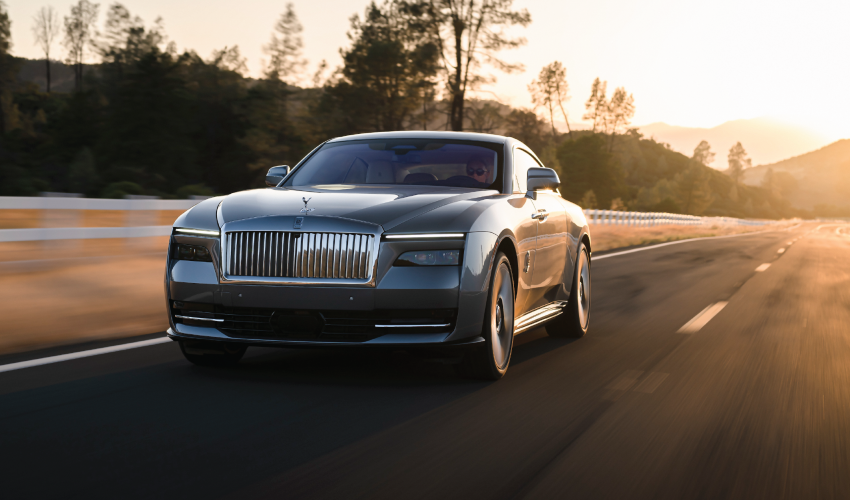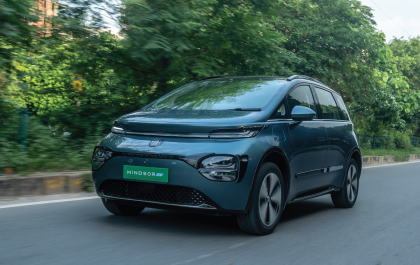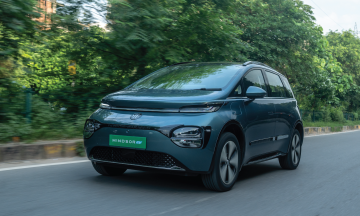With luxury EV options outnumbering budget EVs inthe Indian market, and booming sales of a ordablemodels, the Indian electric mobility space is bullishdespite the paradoxical challenges the technology poses
By Niraj Kakade & Kanaad Chatterjee
The recent fuel crisis across major Indian cities might have made even the staunchest of purists mull over the practicality and independence that electric vehicles (EV) o er. Not that that was holding the EV onslaught back, but the fuel carrier strike just rea rmed its inevitability and the fact that the future is closer than ever. But we are happy to report that India is ready for the future and how.
With a plethora of options across segments for both four-wheelers and twowheelers, from Indian and international automakers, the local EV market has experienced significant growth. The market, valued at $1.45 billion in 2021, is projected to expand to $113.99 billion by 2029, at a compound annual growth rate (CAGR) of 66.52 per cent from 2022 to 2029. This robust growth is indicative of the increasing demand and acceptance of EVs in India.
What’s more interesting is, despite the challenges posed by the COVID-19 pandemic that left other industries reeling, electric car sales in India surged by 109 per cent from 2,814 units in 2019 to 5,905 units in 2020. The Indian government has played a critical role in promoting the adoption of electric and hybrid vehicles through various schemes and incentives such as the FAME – II and PLI schemes. The Union Budget for 2023-24 further emphasized this commitment by allocating substantial investments for electric vehicle production and hydrogen fuel adoption. These government initiatives are in line with India’s target to achieve 30 per cent electrification of the country’s vehicle fleet by 2030.
HOMEGROWN CHARGE
Electric car sales registered substantial growth, with 18,142 units sold in the first half of FY 2022-23, a 268 per cent increase. Indian automaker Tata Motors has been at the forefront of this growth. And it’s natural to wonder why there aren’t as many budget options as luxury EVs in India. But it would be a mistake to account this success only with the newer models like the Nexon EV and the Tiago EV. “It is not easy to manufacture electric cars,” Sirish Chandran, the Editorial Director & Publisher of evo India tells us. “We are looking at some 15 years ago that Tata Motors started their electrification experiments with the gen 1 Tata Indica. And now they are finally reaping the benefits of the knowledge bank and expertise they have created.”
In fact, the carmaker dominated the electric four-wheeler segment with a 79 per cent market share, selling 42,701 units. The homegrown brand has several upcoming EVs to expand their portfolio and its intention was rea rmed by the launch of the Punch.EV, the automaker’s first car for 2024. Other models include the Tata Altroz EV, a premium hatchback, the updated Tata Tigor EV, and the iconic Tata Sierra, which is set to make a comeback, this time as an electric vehicle, combining its nostalgic design with eco-friendly technology Even Mahindra’s sales in the electric passenger vehicle segment grew by 196.79 per cent to 463 units in FY 2023, up from the previous fiscal year. This growth, while impressive, indicates that Mahindra’s market presence in the electric four-wheeler segment is still developing, especially when compared to Tata Motors’ significant market share. Mahindra’s stronger performance was seen in the electric three-wheeler segment, where they, along with Piaggio and Omega Seiki, collectively held a substantial market share. The automaker kicked o 2024 with an updated version of the XUV400 EV. The XUV.e8, an electric variant of the XUV700 and the first production-ready SUV on the INGLO platform, is slated for a December debut. These launches are part of Mahindra’s ambitious plan to introduce five all-electric SUVs by October 2026, with a substantial investment of Rs 10,000 crore.
The sales of electric two-wheelers have also seen a significant increase. The period from April to September 2022 saw sales of 277,910 electric two-wheelers, marking a 404per cent increase over the same period the previous year. The top four companies – Ola Electric, TVS Motor, Bajaj Auto, and Ather Energy – dominated the market, accounting for 77 per cent of the 74,261 e-two-wheelers sold in India in 2023. In fact, traditional internal combustion engine (ICE) giants like TVS Motor Co. Ltd and Bajaj Auto Ltd are rapidly catching up with startups such as Ola Electric, which still holds the top spot. TVS Motor has risen to become the second-largest e-two-wheeler maker in India, closely trailing Ola Electric, while Bajaj Auto has taken the third position, pushing Ather Energy to fourth.
As of October 2023, Ola Electric’s market share was at 30 per cent down from a peak of 34 per cent in August. TVS Motor, on the other hand, saw its share increase significantly from 14 per cent in January to 24 per cent in October. Bajaj Auto also showed remarkable growth, with its market share climbing from 4 per cent to 11 per cent. These figures reflect the market shares based on three-month rolling automobile registrations. In a notable development, Ola Electric announced its ambitious plans in 2021 to establish the world’s largest electric scooter plant, aiming to produce 10 million vehicles annually.
LUXE INFLUX
India’s luxury EV sales also tell a similar story, driven by the concerted e orts and strategic initiatives of leading global automotive brands. Mercedes-Benz, Audi, and BMW are not only expanding their EV portfolios but also setting ambitious sales targets, reflecting the increasing demand and preference for luxury electric vehicles in India. Mercedes-Benz has been making significant strides in the Indian EV market. In 2023, EVs accounted for about 4 per cent of their overall sales volumes, with EV sales tripling compared to the previous year.
Looking forward, Mercedes-Benz plans to launch three new battery electric vehicles in 2024, targeting EVs to make up 25 per cent of its sales in the next four years. Their current EV lineup includes models like the EQB SUV, EQE SUV, and EQS sedan. Additionally, the company is set to introduce four new electric vehicles within the next 8 to 12 months, further expanding its EV portfolio in India.
Audi entered the Indian premium EV segment with the launch of the e-tron and e-tron Sportback. The brand has set a goal for EVs to constitute 15 per cent of its total sales by 2025. Audi’s range of EVs o ered in India includes the e-tron, e-tron GT, and e-tron Sportback, along with the Audi e-tron GT. The company plans to bring more EV models to India in the coming years, including the Q4 e-tron and potentially the A6 e-tron and Q6 e-tron. Audi India’s head, Balbir Dhillon, emphasized the need for government support, particularly in reducing import duties on EVs, to facilitate market testing and assembly of EVs locally in India.
BMW, known for its luxury vehicles, is also expanding the number of its electric o erings in India. As of 2024, BMW’s EV lineup includes models like the i7, iX, i4, and iX1. The Bavarian giant also plans to launch the BMW i5 around November 2024. With the iX being their best-selling electric vehicle, in 2023, BMW India posted its best- ever half-yearly, quarterly, and June sales, demonstrating a balanced growth in both its SUV and sedan segments. The luxury vehicle segment comprising models like the 7 Series, i7, X7, and XM saw a remarkable growth of 128 per cent year-on-year. This performance highlights BMW’s growing foothold in the luxury EV market in India, with a strong focus on a balanced growth strategy across di erent vehicle segments.
SUSTAINABILITY PARADOX
India’s electric vehicle (EV) industry, while brimming with potential, faces a multitude of challenges that need to be addressed for its successful expansion. The industry’s growth is primarily hampered by the underdeveloped charging infrastructure. As of mid-2020, India’s charging stations were significantly outnumbered by traditional petrol pumps, highlighting a glaring gap in EV support infrastructure, particularly in rural and semi-urban areas. Regulatory uncertainties further complicate the landscape. The absence of a coherent and consistent policy framework, along with the discontinuation of certain government subsidies, such as those under the FAME II scheme, creates unpredictability, hindering strategic planning and investment in the EV sector. Technological challenges, especially in terms of battery e ciency, also pose significant obstacles. The current battery technology restricts the driving range of EVs, making long-distance travel less feasible. This issue is compounded by India’s dependency on imports for critical EV components like lithium batteries, which eff ects both the growth and pricing of the EV market. In fact, the burgeoning demand for electric vehicles (EVs) presents a paradoxical challenge to environmental sustainability, particularly concerning the production and lifecycle of lithium-ion batteries.
As Myron Mendes, a Climate Change advocate and National Facilitator at INECC insightfully points out, “Lithium- ion batteries have their own sustainability problems. As the demand for electric vehicles balloons in the coming years, a secondary environmental disaster could be on the cards unless the batteries used in those vehicles can be made in a more sustainable way, with consideration given to their full life cycle.” This issue of battery sustainability is compounded by the challenges in recycling. Currently, recycling lithium- ion batteries is complex and not widely practiced, leading to concerns about waste and the loss of valuable materials. “The best way to make a battery sustainable is to design a cell that can be easily recycled,” says Mendes. However, he acknowledges the complexity of this solution, “This will be a long process, because for each individual sustainability win, finding a new material in one part of the battery often comes with a pay-o further along the battery process.”
The path to more sustainable batteries also involves policy and industry cooperation. As the environmentalist points out, the widespread adoption of sustainable batteries is contingent on manufacturers having no alternative but to use them. This indicates a significant role for policy as a driving force in making batteries sustainable. “More sustainable batteries will only become widely used when manufacturers have no option but to use them. Policy will be the driving force, ultimately, in making batteries sustainable.”
Despite the challenges, there is a sense of optimism. The environmentalist concludes, “The good news is that it looks like this is all possible.” This optimism is rooted in the evolving technological landscape and the growing awareness of environmental issues. With the right mix of technology, policy, and industry commitment, the vision of sustainable EV batteries could indeed become a reality, steering us towards a greener future.
“The good news is that it looks like this is all possible,” says Mendes with a sense of optimism. It involves a multi- faceted approach, including technological innovation, policy intervention, and an industry-wide shift towards sustainability. While this transformation might be gradual and fraught with challenges, the integration of these elements can pave the way for a more sustainable future in EV battery technology, mitigating the potential environmental disaster flagged by the environmentalist.
Even buyers have a perceived sense of range-anxiety which is brought up in every conversation about EVs. When asked if it makes sense to buy an EV in India today, Seshan Vijayraghvan – Assistant Editor, car&bike, says, “Only if you are clear about what you want.” He confirms that it’s not the only vehicle to have in your garage, “If it’s someone who is going to mainly use it for city commute and has easy access to charging infrastructure then buying and EV makes a lot of sense. Having said that, in the current environment, having an EV as the only car in a household is not a feasible option.” Chandran, while echoing similar emotions highlights a more optimistic future. “ 110%” he says when asked if it makes sense to buy an EV in India today. “Majority of the people use their cars within the city. And for city use, it makes a lot of sense, if you have a proper parking spot.” He goes on to address the perceived issues of range anxiety and infrastructure. “A range of 150-200km is more than enough even you’re traveling from Delhi to Gurugram on a daily basis.
And when you’re back home, you can just plug in your charger, instead of waiting at a petrol pump, which eliminates the infrastructure and range-anxiety.” Citing the example of the Nexon, Chandran also highlights how the EV powertrain o ers better performance and refinement over its ICE counterpart, in addition to just e ciency. He doesn’t recommend it for those who don’t have a fixed parking spot and need to go look for charging stations. In fact, he says, “If you have an ICE primary car, your second vehicle should be an EV. It doesn’t make sense to have two ICE cars. The EV can be your daily runabout and the ICE vehicle can be for longer road trips.”
With India’s EV market poised for substantial growth in the coming years, this boom not only presents a significant opportunity for both local and international companies to contribute to the growth of India’s EV ecosystem but also for Indian buyers to contribute to
sustainable and future-proof mobility. If you are sold on the idea, here are some options you can consider in India at the moment.
Reproduced with permission from Mansworldindia.com
- mwhttps://mansworldbangladesh.com/author/mw/
- mwhttps://mansworldbangladesh.com/author/mw/
- mwhttps://mansworldbangladesh.com/author/mw/
- mwhttps://mansworldbangladesh.com/author/mw/













